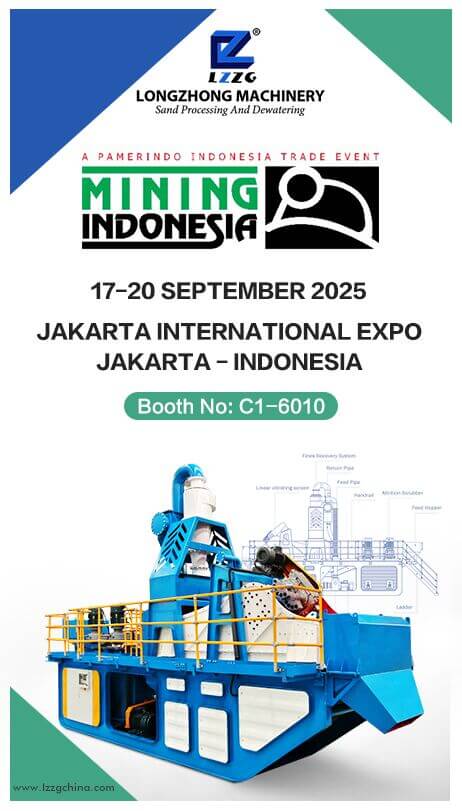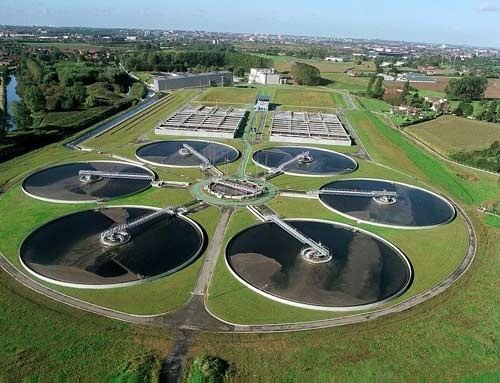
Mining Indonesia 2025
Exhibition Name: The 23rd International Mining & Mineral Rec…

Tel: 86-18736301510
Fax: 86-379-65160018
Email: export@lylzzg.com
2021-10-15

1. Pathogen contamination
Mainly from urban domestic sewage, hospital sewage, garbage and surface runoff. The characteristics of pathogenic microorganisms are: ①large number; ②wide distribution; ③long survival time; ④fast reproduction speed; ⑤easy to develop resistance and difficult to eradicate; ⑥After the traditional secondary biochemical sewage treatment and chlorination disinfection, certain Some pathogenic microorganisms and viruses can still survive in large numbers; such pollutants actually enter the human body through a variety of ways, and survive in the body, causing human diseases.
2. Aerobic organic pollution
The common feature of organic matter is that after directly entering the water body, these substances are decomposed into simple inorganic substances, carbon dioxide and water through the biochemical action of microorganisms. The dissolved oxygen in the water is consumed during the decomposition process, and the pollutants decay under hypoxic conditions. Decomposes and deteriorates water quality, and these organic substances are often referred to as aerobic organic substances. The more aerobic organic matter in the water body, the more oxygen consumption, and the worse the water quality, indicating that the water body pollution is more serious.
3. Eutrophication pollution
It is a phenomenon of water pollution caused by the excessive content of plant nutrients such as nitrogen and phosphorus.
4. Odor
Odor is a common pollution hazard, and it also occurs in polluted water bodies. There are more than 4,000 kinds of stench that humans can smell, and dozens of them are harmful. The hazards of foul smell are: ① hinder normal respiratory function and reduce digestive function; mental irritability, reduced work efficiency, reduced judgment and memory; long-term work and life in foul smelling environment will cause olfactory disturbance, damage to central nervous system and cerebral cortex The excitement and regulation function of the water; ②Some aquatic products can not be eaten and sold if they are infected with the foul smell; ③The foul-smelling water body cannot be used for swimming, fish breeding, and drinking, which destroys the use and value of the water; ④It can also produce hydrogen sulfide, formaldehyde, etc. Toxic hazard.
5. Acid, alkali, and salt pollution
Acid and alkali pollution changes the pH of the water body, destroys its buffering effect, eliminates or inhibits the growth of microorganisms, hinders the self-purification of water bodies, and can also corrode bridges, ships, and fishing gear. Acid and alkali often enter the same body of water at the same time, and some salts can be produced after neutralization. From the perspective of pH value, acid and alkali pollution is self-purified due to neutralization, but various salts are produced, which has become a new part of the water body. Pollutants. Because the increase of inorganic salt can increase the osmotic pressure of water, it has an adverse effect on the growth of freshwater organisms and plants. In salinized areas, the salt in surface water and groundwater will further harm soil quality.
6. The hardness of groundwater increases
The harm of high hard water is manifested in many aspects: it is difficult to drink; it can cause digestive tract dysfunction, diarrhea, and miscarriage of pregnant animals; it is inconvenient for people’s daily use; consumes more energy; affects the life of kettles and boilers; boiler water scales and is easy to cause explosion; It needs to be softened and purified. The loss of acid, alkali, and salt into the environment will cause the hardness of groundwater to increase, forming a vicious circle.
7. Pollution by toxic substances
Pollution by toxic substances is a particularly important category of water pollution. There are many types, but the common feature is the toxic hazard to biological organisms.
1. Microfiltration
Microfiltration, also known as microporous filtration, uses porous membranes (microporous membranes) as the filter medium to trap sand, silt, clay and other particles in the solution as well as giardia and cryptosporium under the pressure of 0.1~0.3MPa. Spodoptera, algae and some bacteria, etc., and a large number of solvents, small molecules and a small amount of macromolecular solutes can pass through the separation process of the membrane.
2. Ultrafiltration
Ultrafiltration is one of the membrane separation technologies driven by pressure. For the purpose of separating macromolecules from small molecules, the pore size of the membrane is between 20-1000A°. The hollow fiber ultrafilter (membrane) has the advantages of high filling density in the unit container and small floor space.
3. Nanofiltration
Nanofiltration is a pressure-driven membrane separation process between reverse osmosis and ultrafiltration. The pore size of nanofiltration membranes is about a few nanometers. Compared with other pressure-driven membrane separation processes, it appeared later. Its appearance can be traced back to the research of J.E. Cadotte’s NS-3000 membrane in the late 1970s. After that, nanofiltration developed rapidly, and membrane modules were commercialized in the mid-1980s. Nanofiltration membranes are mostly derived from reverse osmosis membranes, such as CA, CTA membranes, aramid composite membranes and sulfonated polyethersulfone membranes.
4. Reverse osmosis
Reverse osmosis, also known as reverse osmosis, is a membrane separation operation that uses pressure difference as the driving force to separate solvent from solution. Because it is opposite to the direction of natural penetration, it is called reverse osmosis. According to the different osmotic pressure of various materials, the reverse osmosis pressure greater than the osmotic pressure can be used, that is, the reverse osmosis method, to achieve the purpose of separation, extraction, purification and concentration.
5. Activated carbon adsorption method
Activated carbon adsorption technology has been used in the refining and decolorization of pharmaceutical, chemical and food industries in China for many years. It has been used for industrial wastewater treatment since the 1970s. The activated carbon adsorption method has gradually become one of the main methods for the secondary or tertiary treatment of industrial wastewater.